Over the years I’ve run Breathesafeair, I’ve reviewed over 50 reusable masks and experienced many more. However, despite reviewing so many masks, I have not yet written about a single reusable P2 respirator.
If you’re unfamiliar with respirator standards, I recommend reading this article. In short, P2 is Australia and New Zealand’s roughly equivalent standard to FFP2, N95, and KN95. As a New Zealander myself, I was very excited to discover ActiveMask as this device meets our local standards in Oceania.
That isn’t to say that this mask is exclusive to these markets – quite the contrary! A P2 respirator is a high-filtration device that is usable in a range of circumstances and locations. With that being said, meeting the local certifications is a big way to gain trust in local markets. As such, I was excited to get my hands on and try ActiveMask for myself.
ActiveMask is a respirator largely targeted at frontline workers, medical personnel, and customer service workers – anyone often exposed to high-risk situations. It is worth noting, though, that the use of ActiveMask is not limited to these individuals. As a standard ‘consumer’ user, I’ve worn this respirator for the past couple of weeks, and it’s performed very well. However, I’ll dive into that soon!
Whether you are looking for an occupational-use respirator or simply a device that offers a high level of protection for day-to-day activities, ActiveMask might be worth checking out. In this review, I’ll share the science behind ActiveMask and how it has performed over the past few weeks that I’ve tested it. While I will do my best to discuss everything pertinent, if you have further questions after reading this review, please feel free to leave a comment down below. I’ll do my best to answer whatever questions arise!
Before diving into the review, there are a few disclaimers that need to be mentioned:
- P2 respirators are designed with occupational use in mind. This means they are designed to be fit-tested using qualitative or quantitative methods. For consumers without access to fit-testing equipment or training, perform a pressure check to ensure the best fit.
- For a mask or respirator to provide the best protection, it must be fitted correctly.
- ActiveMask features an exhalation valve with the option to add a carbon filter (included). If source control or two-way filtration are needed, ensure that the additional carbon filter is in place.
- This review is based entirely on my own experiences. My experiences may differ vastly from your own.
This post contains affiliate links. For more information, please refer to my affiliate disclaimer. I was sent a product for review, but the article is not sponsored. All opinions expressed in this post are my honest thoughts. I only recommend products that I genuinely believe in.
Information on this blog is for informational purposes only. Readers are encouraged to confirm the information herein with other sources. Furthermore, this information is not intended to replace medical advice from professionals. This website assumes no responsibility for the accuracy of the information, and information is subject to change without notice. Devices mentioned on this website are not medical devices and do not guarantee protection.
Filtration
ActiveMask is approved P2 under the AS/NZS1716 standard by Sai Global. You can confirm this certification status on Sai Global’s database by searching license number 41180 which is ActiveMask’s license number. To find the license number, check the manual that comes with your ActiveMask respirator.
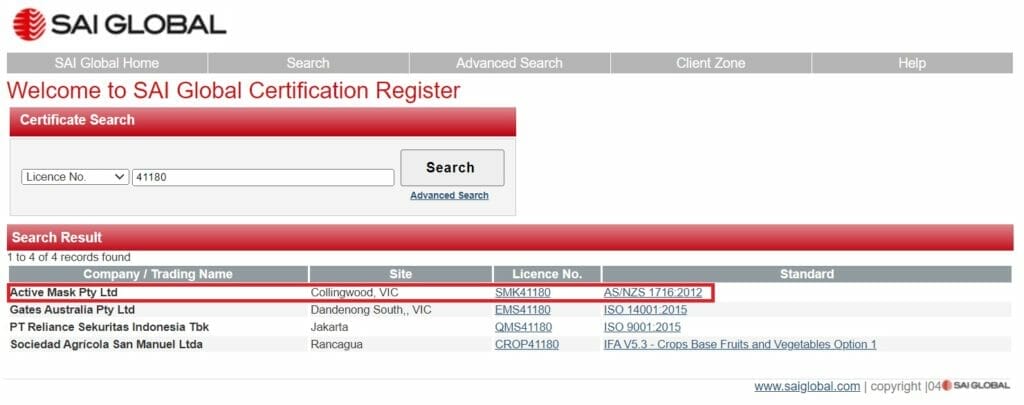
Sai Global is one of the few accredited certification bodies for AS/NZS1716 alongside BSI, Global-Mark, and CertMark. This means that the P2 certification that ActiveMask holds is authentic, and the company and respirator have officially been certified. If you’re curious about the AS/NZS1716 certification process, and how you can verify that respirators are authentic, please refer to this article.
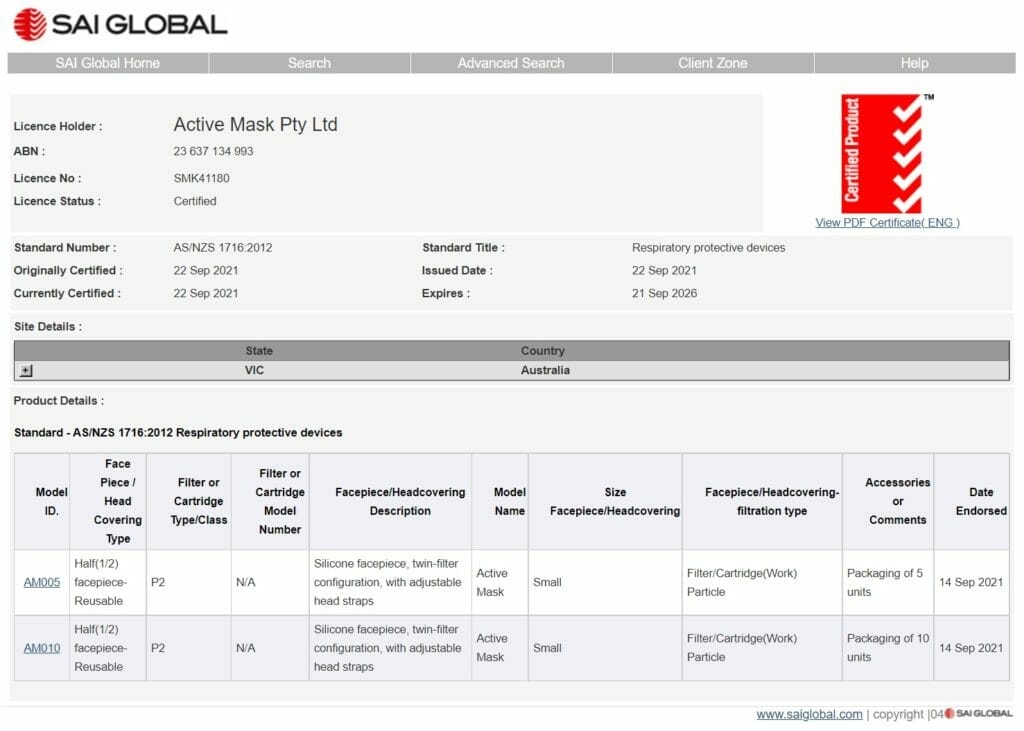
So, now that we know that ActiveMask is certified P2 as per AS/NZS1716, how does this compare to other standards? For the full comparison, please refer to this article on respirator standards. However, for a very brief comparison, read on.
P2 is roughly equivalent to the N95 standard and almost identical to the FFP2 standard. Both the P2 and FFP2 standards require > 94% filtration at a flow rate of 95L/min. On the other hand, the N95 standard requires a filtration of >95%, but at a lower flow rate of 85L/min. Interestingly, the P2 and FFP2 standards are stricter regarding breathability and fit, but I will discuss that in more detail soon.
When it comes to filtration, under the AS/NZS1716 test methodology, ActiveMask surpassed > 97% filtration across all tested samples. In the real world, with a properly fitted ActiveMask, you can expect to see a particle filtration rate above this percentage as all samples provided between 97% and 98% filtration efficacy.
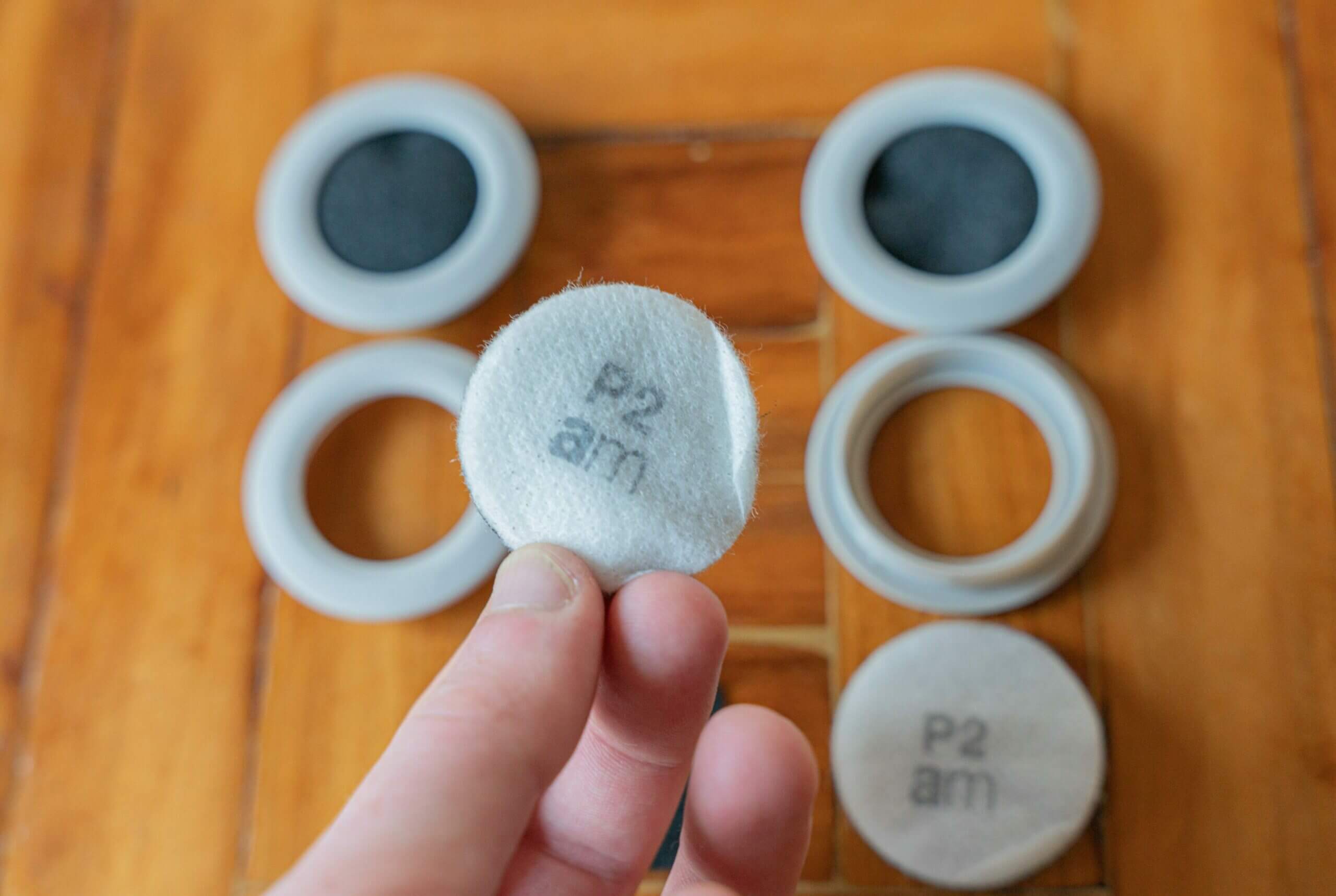
This testing is carried out using particles with a mass median diameter of 0.3 to 0.6 microns with some particles in the 0.02 to 2-micron size range. All of this testing is carried out at a flow rate of 95L/min. However, due to how mask filtration mechanisms work, ActiveMask would likely filter both larger and smaller particles than 0.3 to 0.6 microns more efficiently.
If this has all been a bit too technical, here is the conclusion: ActiveMask provides protection on similar to an N95 or FFP2 respirator when fitted correctly. While the N95 standard has a different testing methodology, this ‘’results in virtually no impact on the level of respiratory protection provided to wearers’ (source).
ActiveMask also uses an activated carbon layer in its filters. This carbon layer is added to the filter to adsorb a range of VOCs and odours. While this filter shouldn’t be relied upon to filter VOCs (as there is no testing as to the efficacy of carbon filtration and concentrations can vary), it’s a great addition that brings no downside to the filter.
Please refer to the table below for more information about what activated carbon can filter. This table lists a range of chemicals, gases, fumes and odours and activated carbon’s efficacy against each.
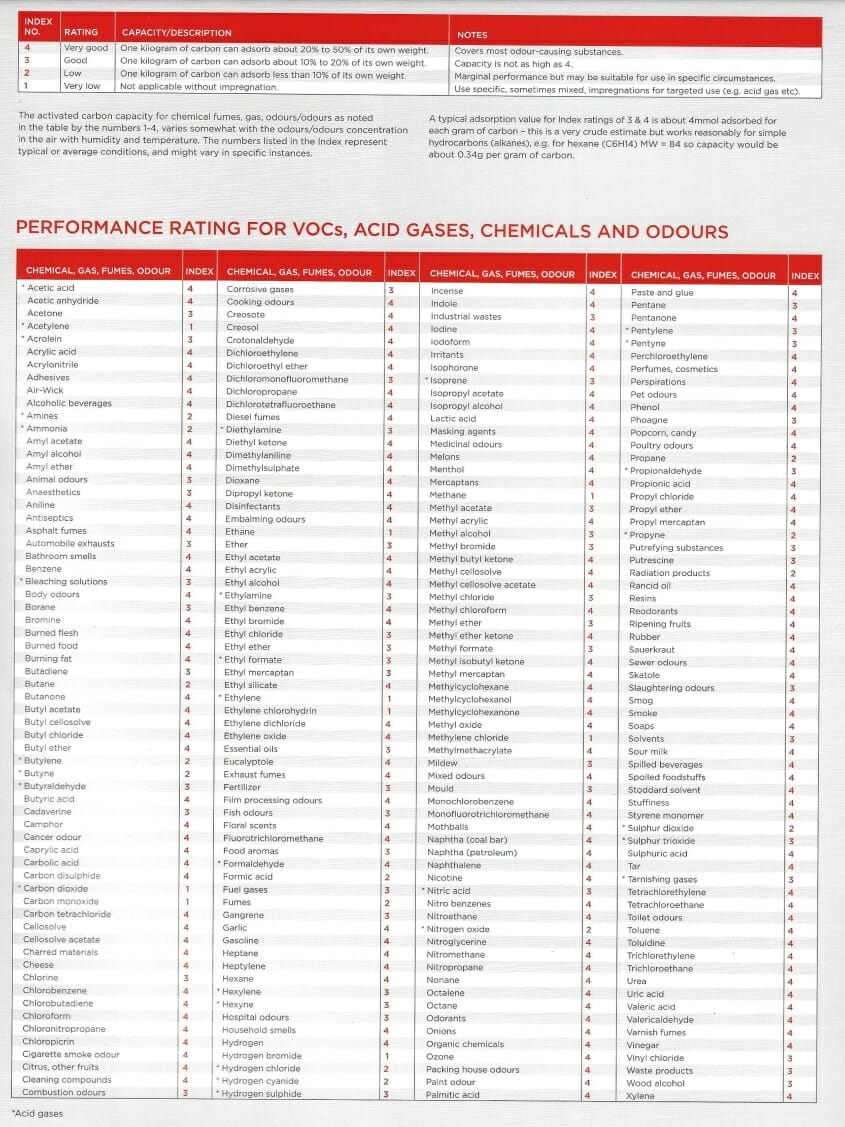
The breathability of ActiveMask was tested at two flow rates – 30L/min and 95L/min. At 30L/min, ActiveMask had exceptional breathability, with tests showing between 24 – 33 Pa of inhalation resistance. 30L/min represents an idle or lightly active wearer.
The 95L/min flow rate tests are more applicable for anyone under heavy exertion. At this higher flow rate, ActiveMask showed an inhalation resistance of 114 – 142 Pa. this is well within the requirements of the P2 standard and still similarly breathable to many N95 disposable respirators.
Exhalation resistance is minimal due to the inclusion of an exhalation valve at the bottom centre of the mask. You can cover this valve with an included filter, but whether covered or not, the exhalation resistance is negligible.
It is worth noting that the exhalation filter is only a layer of carbon as opposed to the primary filters, which have a particulate filter attached to a carbon filter. I can’t speak to the actual filtration efficacy of these exhalation filters, but they likely don’t filter as effectively as the primary two filters.
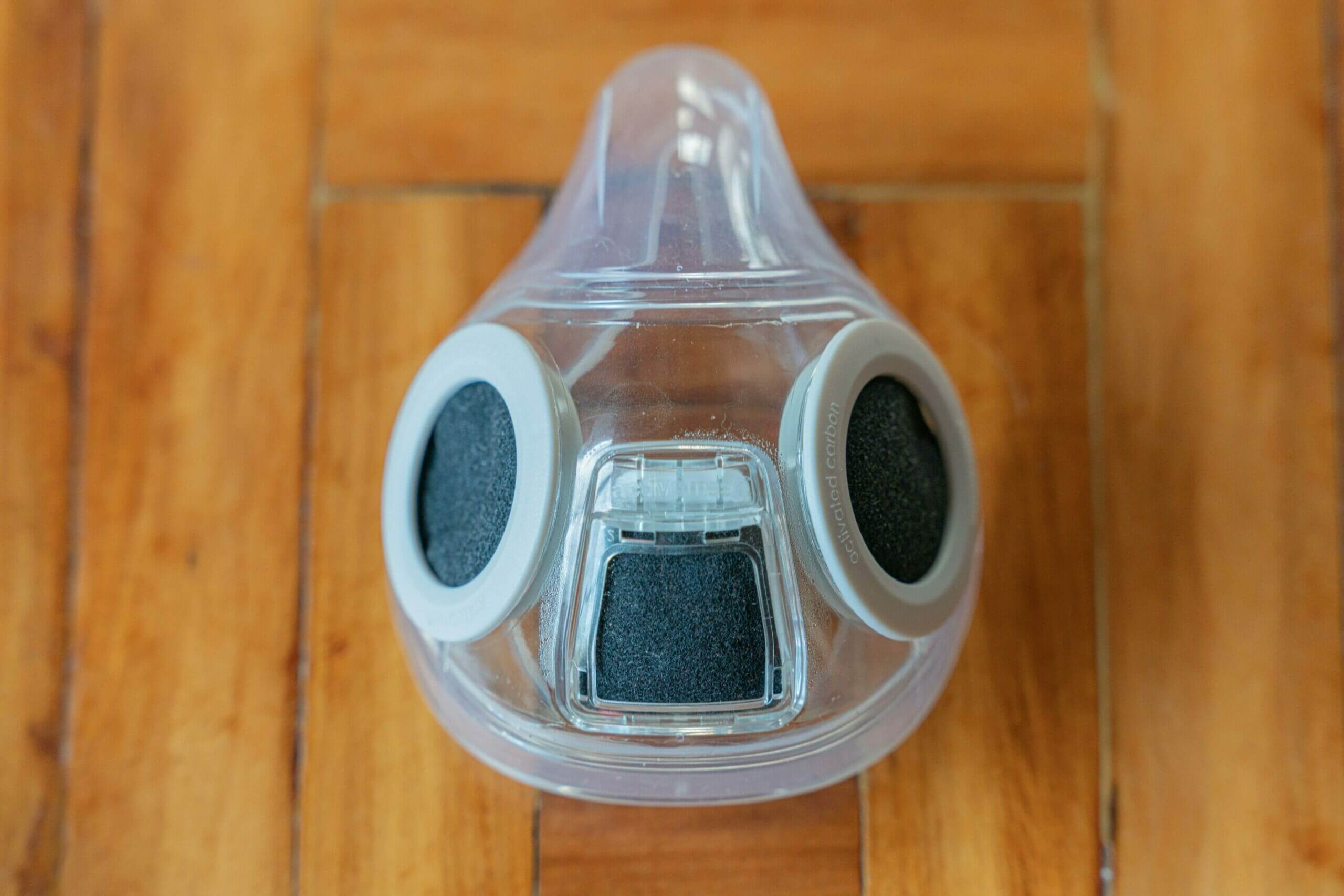
Covered exhalation valve (centre).
Overall, ActiveMask is one of the few reusable masks I have reviewed that holds an official certification instead of just lab test results. With stringent testing requirements, the P2 certificate of ActiveMask makes it a good choice for both consumers and professionals alike.
Alongside maintaining filtration > 97%, ActiveMask also provides exceptional breathability at resting and lightly active breathing rates. Even when under heavy exertion, this mask maintains good breathability.
With that being said, filtration is only one aspect of protection. Where filtration represents the theoretical performance of a mask, fit dictates if that filtration is applied. Let’s take a look at the fit of ActiveMask.
Purchase ActiveMask & Learn More
Fit
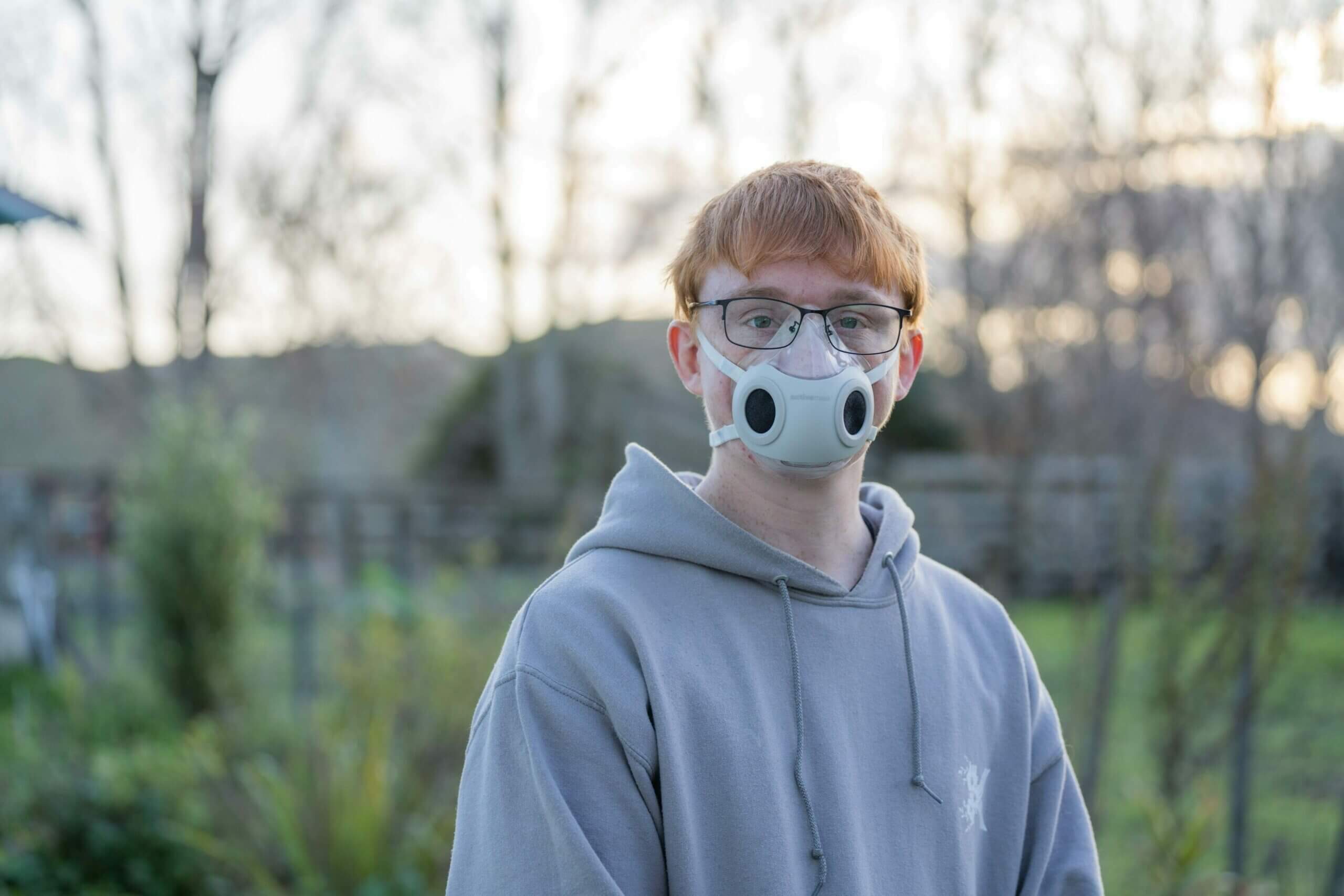
Before discussing fit, I need to note that the experiences discussed in this section apply to my own experience with the mask. Everyone has different facial features, and therefore masks and respirators fit every individual differently. Therefore, a mask that fits me may not fit you and vice versa.
As part of ASNZS1716, ActiveMask underwent objective fit testing. For a respirator to be certified P2, it must have a TIL (total inward leakage) of ≤ 8%. This means that through testing across a variety of subjects performing a range of actions, the respirator must not have a mean leakage above 8%.
Overall, the mean leakage of ActiveMask was 4.3%. This was measured across ten samples performing five actions that I will discuss soon. With no single sample seeing leakage exceeding 8% and an average leakage of 4.3%, ActiveMask sits within the requirements set by the P2 standard.
For this testing, a range of human subjects must don the mask and perform actions. These actions range from simple movements to turning their head left and right, to more advanced activities such as talking and walking. TIL testing determines that a respirator has minimal leakage on ‘typical’ facial characteristics within the local population.
This fit testing ensures that the respirator fits typical subjects and has minimal leakage. In this way, the P2 standard is more thorough than the N95 standard. Now, knowing that ActiveMask provides a good seal with ≤ 8% leakage in laboratory testing conditions, how did I find the fit?
ActiveMask relies on two head straps to secure the mask on the wearer’s face. I prefer headbands due to the significantly improved fit they generally offer – especially on heavier masks made from plastic. While they aren’t as convenient as earloops, they tend to provide a better seal that remains secure even when I’m active.
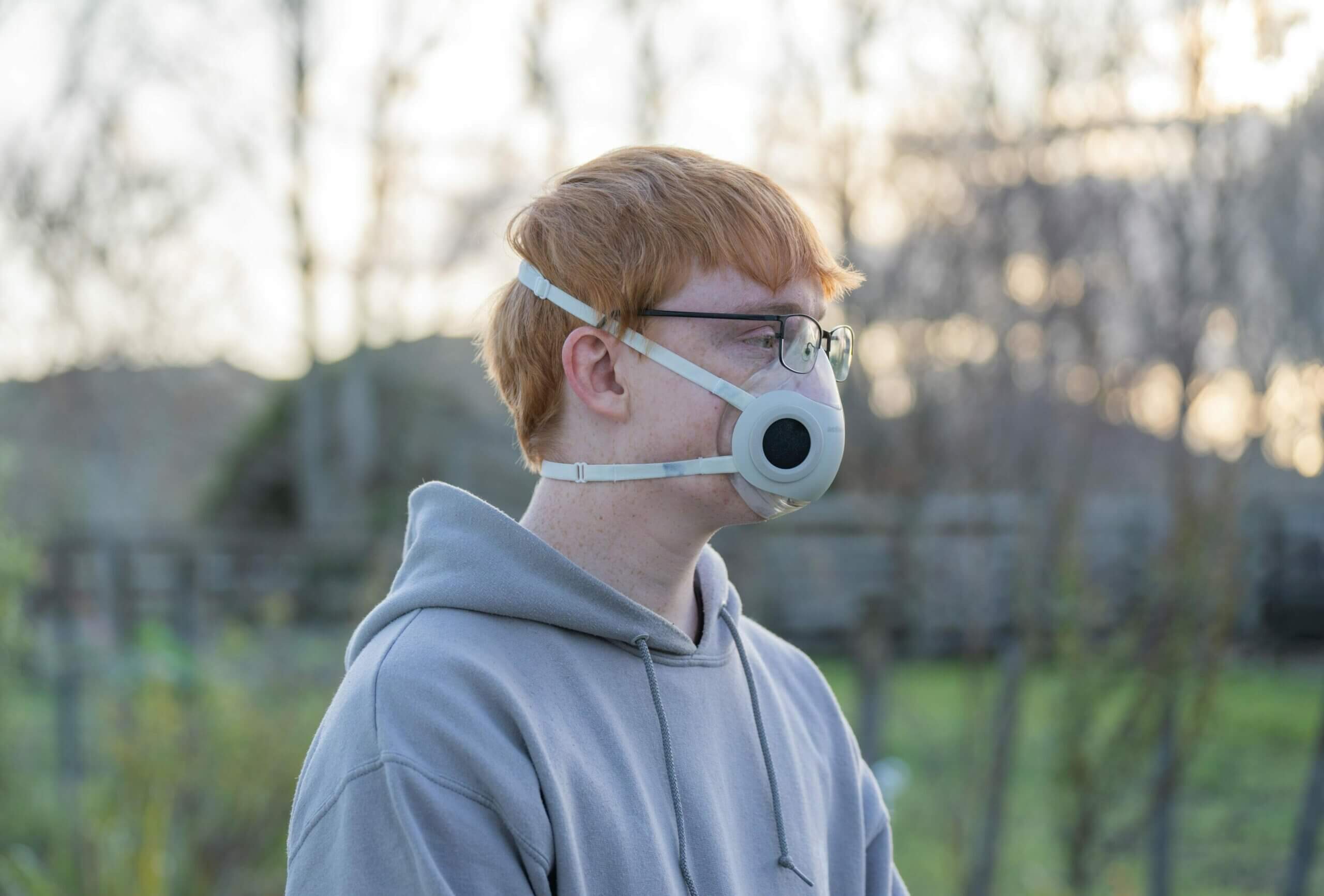
The headbands are elastic but sturdy enough to maintain their position on my head. While I did find myself adjusting the mask occasionally, this is an issue I have encountered with every mask that I have tested so far. Luckily, I would only have to readjust the headbands every hour or so.
I slightly prefer the ‘holo’ design Envo Mask offers with an upper headband that splits into two, one band to sit on top of your head and one at the back of your head. This did a great job of keeping the headband in place even after long periods of wear. With that being said, the headbands on ActiveMask are still very good, and I can’t complain about them.
For the seal, ActiveMask uses a silicone shell that has different levels of softness depending on the location. The outer shell of the mask looks like one piece of plastic, but it is actually multiple. The front of the mask is a hard plastic that keeps the dome shape, whereas the seal is very soft and malleable.
The silicone that forms the seal on ActiveMask is exceptionally soft, allowing the mask to seal well. If I had to compare the seal to other similar devices, I would say that it seals as well as Envo Mask and Stealth Mask. However, where Envo Mask suffers longevity issues due to its gel seal, I don’t believe ActiveMask will have the same problems – only time will tell on that front, though.
Despite my praise of the seal, it wasn’t perfect from the get-go. The first time I donned the respirator, I noticed leaks near the bridge of my nose. These leaks were only present on exhalation. However, they were worrying. Since the silicone seal around the nose is very soft, I found that it could fold into itself, leaving minor gaps in the seal on exhalation.
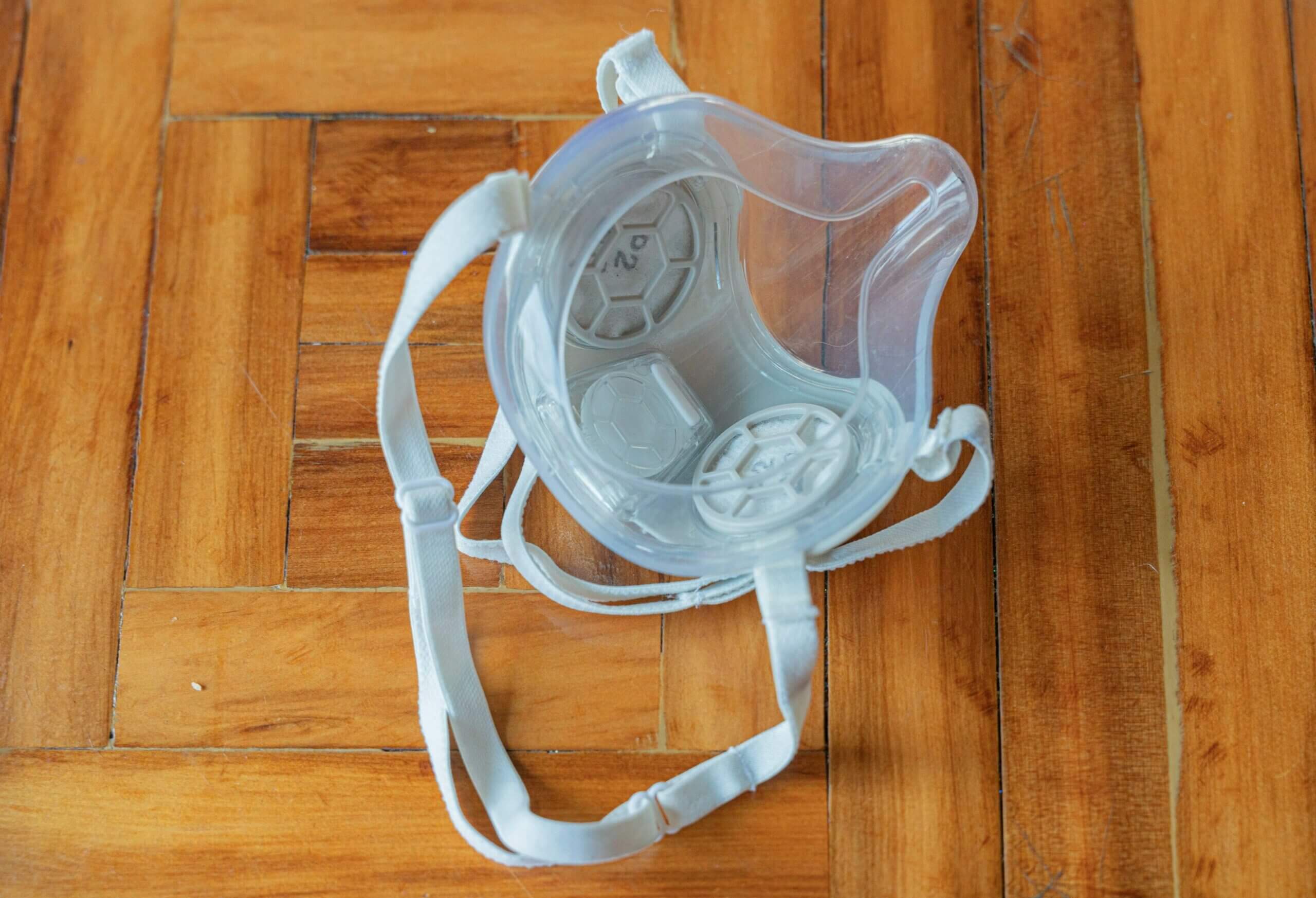
This took me a few days to figure out, but to remove the leak, I found that I had to fit the mask from top to bottom. That is to say, I would slide it onto the bridge of my nose first before sealing the bottom of the mask. This was an unusual way to fit the mask, but I found it to remove the leaks I encountered when fitting the mask traditionally.
Throughout my breathing cycles, the mask would have minor movements based on whether I inhaled or exhaled. Despite having small filters, ActiveMask has great breathability; therefore, these movements were minor compared to other masks such as Stealth Mask.
I wanted to mention this because I often find that masks that move significantly with inhalation and exhalation cycles are more likely to need readjustment due to broken seals. On ActiveMask, this was not an issue that I encountered.
Overall, I found the fit of ActiveMask to be excellent. However, until I discovered how to fit the mask, I did have regular exhalation leaks around the bridge of my nose. I’m unsure whether this is a common issue or just something I experienced. That said, it was solvable – it just took me a few days to figure out how!
Before finishing this section, I want to make a quick note about wearing glasses with ActiveMask. As you may be able to see from the images, wearing glasses with ActiveMask is a bit different from most masks. I found myself having to pull my glasses out quite a lot and then sitting them on top of the mask. While this wasn’t an issue, it did take me a while to get used to.
Purchase ActiveMask & Learn More
Comfort
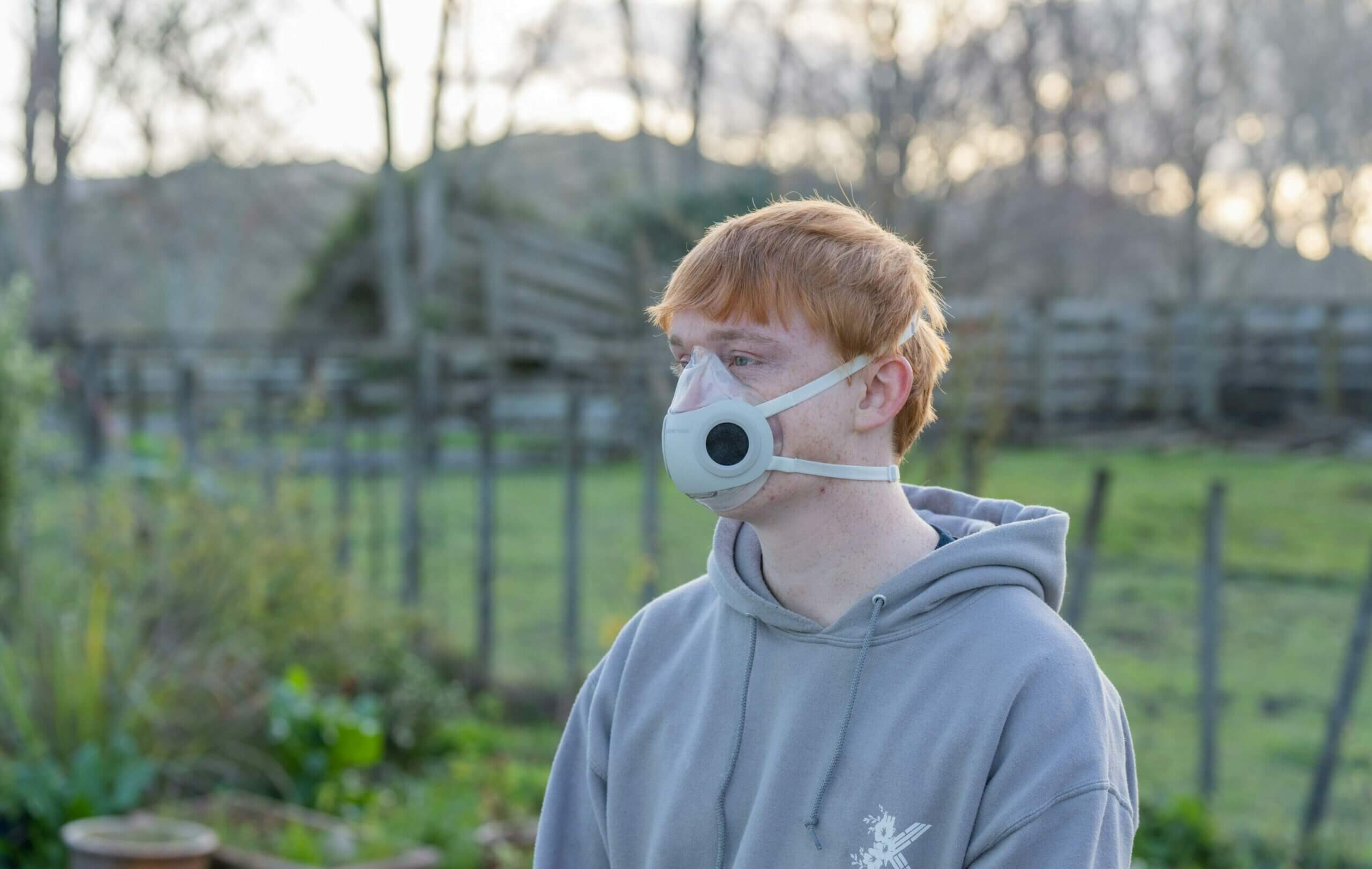
Comfort tends to be an area where silicone and plastic masks struggle. Not only are they heavier, but the materials used tend to increase the humidity inside the mask, while smaller filters lead to an increase in breathing resistance.
ActiveMask sits towards the more comfortable end of silicone respirators. It’s more comfortable than heavier masks such as the AirHead Mask and Gill Mask, but not as comfortable as Envo Mask or the T1 Tactical Respirator (previously O2 Canada’s Curve 1.2).
Beginning with the fitting mechanism, I found ActiveMask to perform exceptionally well. The headbands never caused discomfort, and I wore the mask for over four hours without doffing it. No matter how long I wore the mask, the headbands remained comfortable.
The elastic bands have some give, but they are sturdy and capable of keeping the mask in place. Initially, I thought that the elastic bands might be too tight and thin (and therefore be uncomfortable), but this luckily wasn’t the case. The bands are thick enough to distribute the mask’s weight effectively and don’t overly pressure any point on my head.
The mask seal was also comfortable, but I did find myself wanting to have a brief respite after wearing the mask for a couple of hours. To achieve the best fit, I found that I tightened the headbands quite a lot. While the headbands remained comfortable throughout, the point where the top headband mounts to the mask did become uncomfortable after an hour or two had elapsed.
This is because the point where the head band mounts to the shell is the tightest point in the seal. Admittedly, I could loosen the headbands a bit, but this would lead to a decent but not as secure fit.
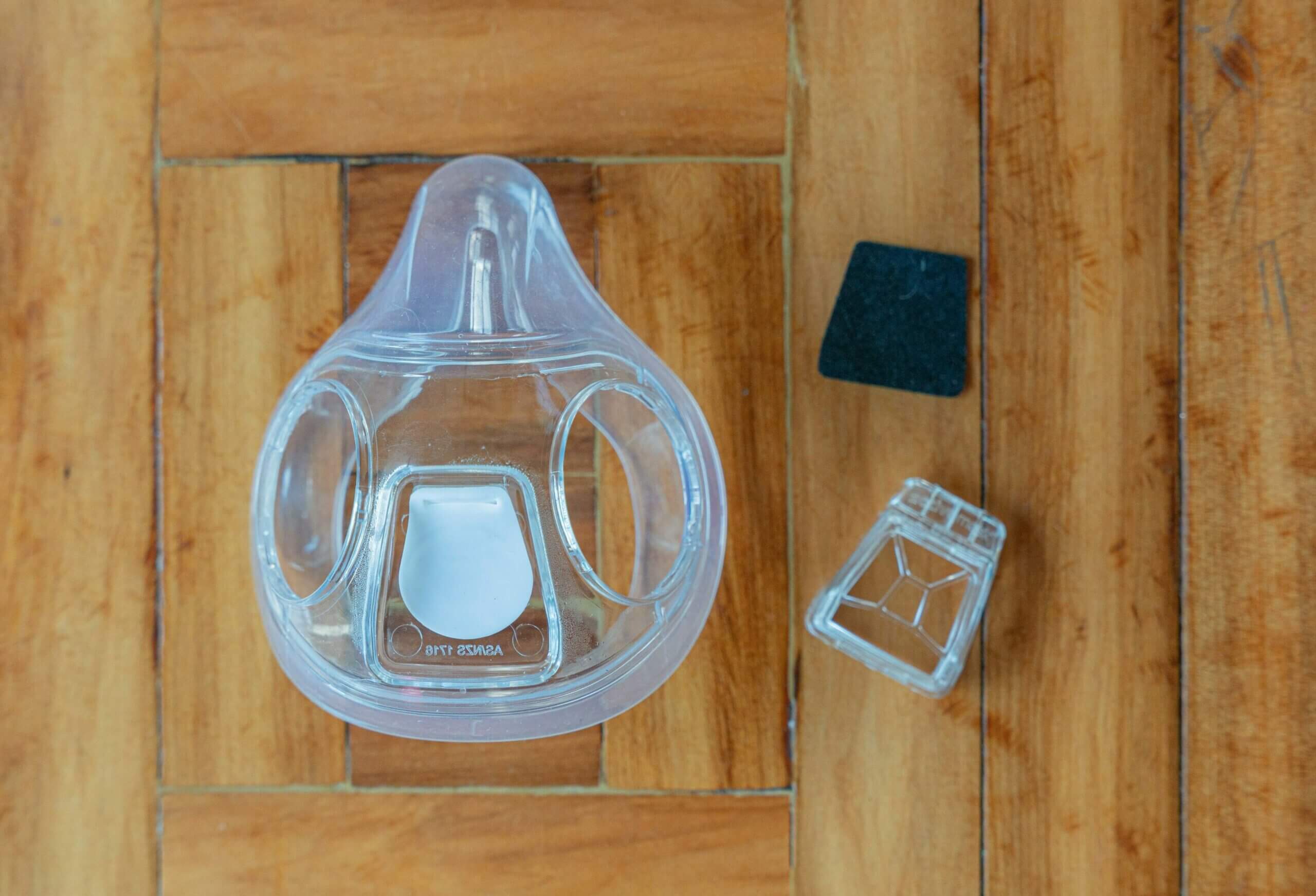
This minor discomfort was not a big issue throughout my experience wearing ActiveMask because I could take off the mask for a minute or two every couple of hours. This brief break was enough to feel comfortable wearing the mask again, so I don’t consider it a big issue. Instead, it’s just a factor to keep in mind.
Due to the inclusion of an exhalation valve and highly breathable Lanaco wool filters, ActiveMask is very breathable – it’s one of the most breathable silicone masks I’ve tried. Breathing never felt strained, and I didn’t find myself having to adjust my breathing from my usual, maskless state.
Since breathability is great, the mask also does a great job of expelling humidity and keeping cool within. While masks will inherently create a warm and humid microclimate within – especially on a hot day or when the wearer is active – ActiveMask performed better than the likes of Gill Mask, Stealth Mask, and other reusable silicone masks.
Breathability was one of the most impressive aspects of ActiveMask. From the pictures, I didn’t think that the mask would be breathable. In fact, I felt that breathability would probably be an issue with the mask. However, after using it myself, I’ve found that it’s quite the opposite!
Wearing the mask for more than an hour or two will result in ‘mask face’ where you will visibly have marks on your face where the mask was sealed. However, this is a common issue across masks, and ActiveMask performed similarly to other silicone and plastic masks.
Wearing Activemask did not restrict my head movements in any way. I often find that larger masks make some head movements uncomfortable, especially when looking up or down. However, I had no issues with head movements while wearing ActiveMask, and it performed very well.
Due to this, and the fact that the mask is very breathable, wearing ActiveMask does not feel restrictive. Therefore, while you will be fully aware that you are wearing a mask (of course!), you won’t need to change your normal habits at all to accommodate the respirator. This is a great sign and one of the best ways to judge the comfort of a mask or respirator.
Overall, ActiveMask is one of the more comfortable silicone/plastic masks I have worn. While I usually took off the mask every hour or two to give my face a brief break, this was not an issue for me as I felt comfortable with the level of protection I was receiving from the device.
Purchase ActiveMask & Learn More
Cost and Lifespan
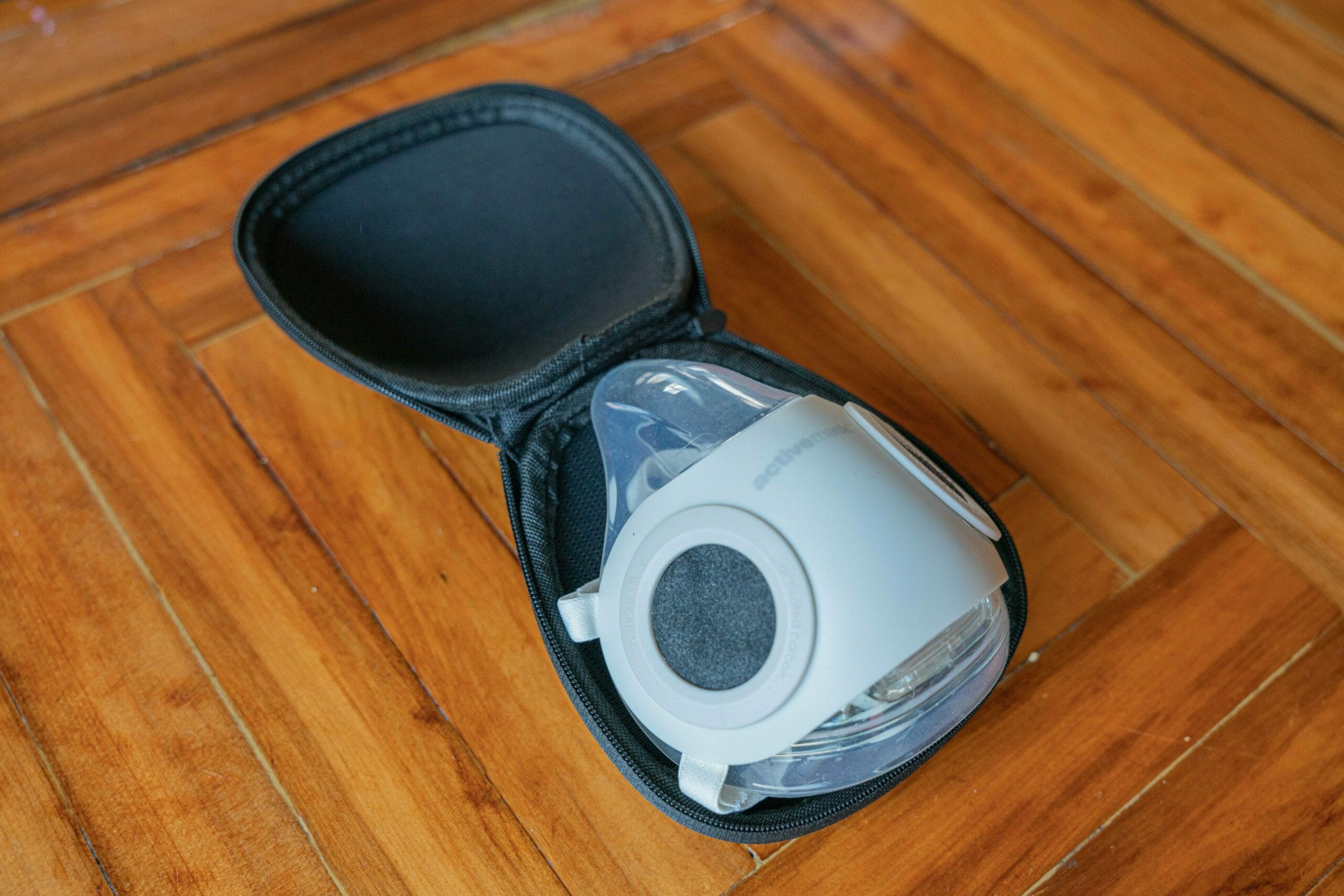
ActiveMask is not currently on sale for consumers and is focused on occupational use such as by medical professionals. However, I have been told that plans include making the mask more accessible and purchasable by consumers.
For this reason, I can’t comment on the mask’s pricing. What I do know, though, is that the mask will only need to be purchased once per individual. ActiveMask is made to be reusable, and from my usage of the device, it feels sturdy. Unlike Envo Mask, I feel like ActiveMask will last.
Therefore, provided that the mask is looked after, I see it as only a one-time purchase per user. Of course, you may need to replace the device after a couple of years, but at that point, you will know whether the cost is worth it for you.
ActiveMask also comes with a hardshell carrying case that allows you to ensure that the mask is stored correctly. While I don’t often use mask cases, I appreciate the inclusion of this case as it’s both well-made and ensures that ActiveMask won’t get damaged when I put it in a backpack.
I have been told that replacement filters will be very affordable, with the current pricing being AUD 1.40 per filter pair. While the lifespan of filters will vary – they should be replaced daily in clinical settings but may last a week with consumer use – this price is much lower than most competing products.
Even if you are replacing the filters daily, ActiveMask will quickly become cheaper than donning new disposable respirators daily. While surgical masks can be found cheaper, they provide far less protection and aren’t comparable to ActiveMask. Therefore, the best point of comparison is a disposable filtering facepiece P2 device. In both Australia and New Zealand, these respirators usually go for over $5 apiece.
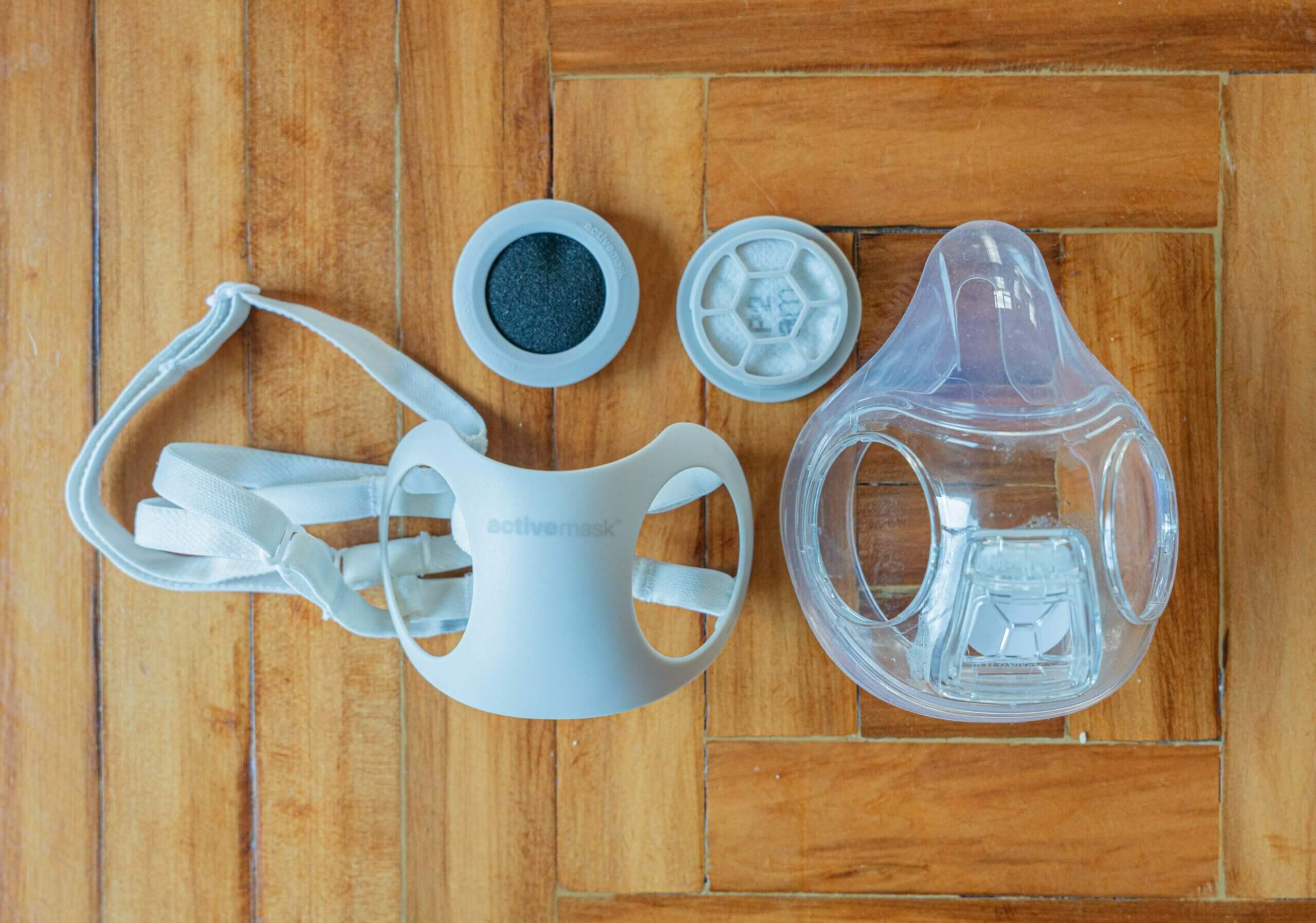
Also important to note is that ActiveMask uses a modular design. Although you can’t currently buy parts individually, I can see ActiveMask running a replacement store in the future. Each mask part can be easily replaced – from the headbands to the silicone seal and outer shell.
Overall, I believe that ActiveMask is a compelling device when it comes to cost and lifespan. Even if ActiveMask costs a premium initially, I believe it will still be a good choice. There are few officially certified reusable respirators on the market in this form factor, and even fewer boast the breathability and low lifetime cost of ActiveMask.
Purchase ActiveMask & Learn More
Face shield
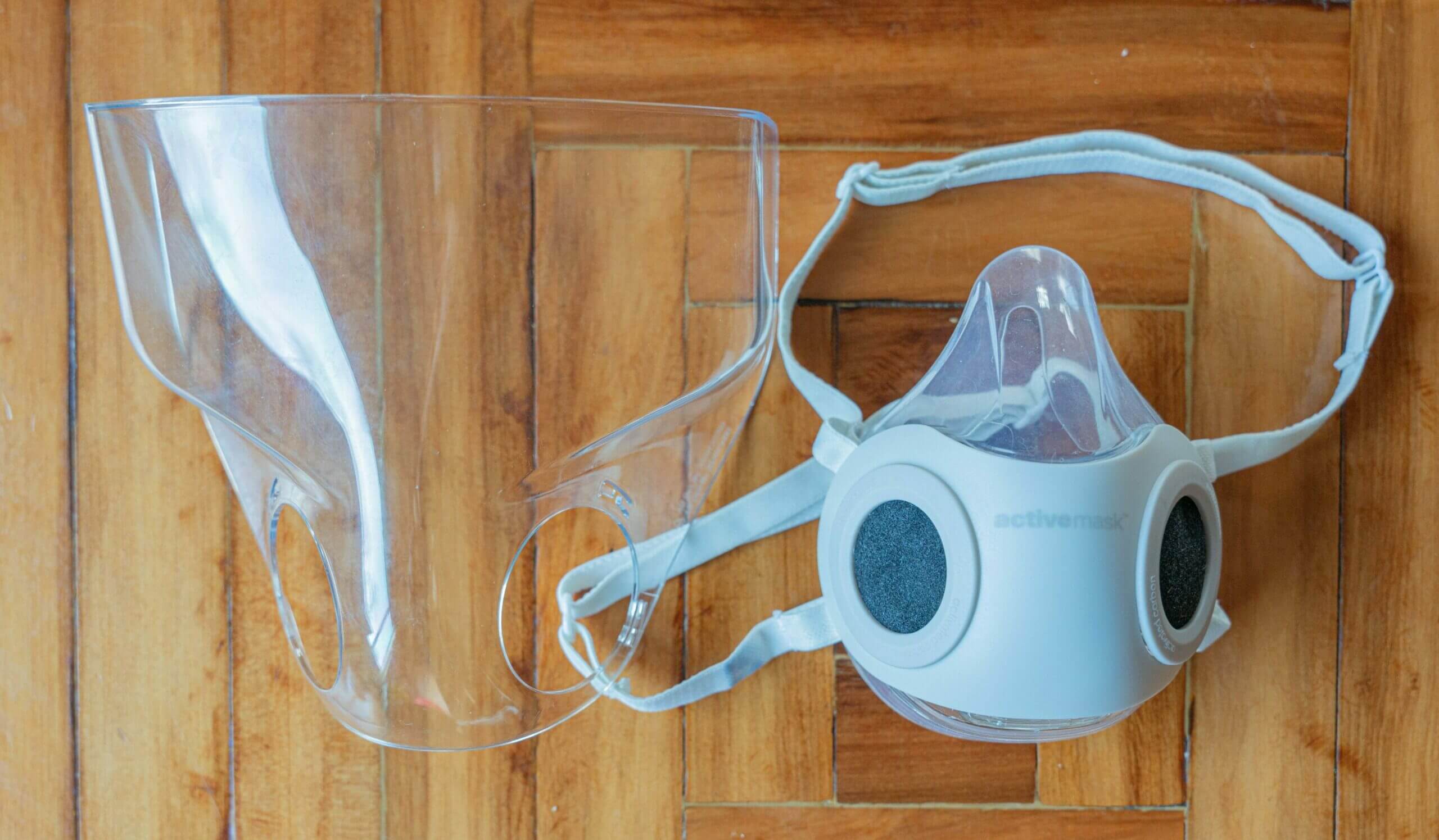
One of the unique aspects of ActiveMask, and something that makes it ideally suited for medical and frontline worker use, is that a face shield attachment can be mounted to the mask. This mounting mechanism removes the need to don a separate face shield which is currently essential for many frontline workers.
The face shield is large enough on me that it protects me well above my eyes. However, it’s not as wide as a dedicated face shield. Nevertheless, I found it comfortable to wear as although it does add some weight to the mask, the extra weight was well-supported by the headbands.
What I appreciate most about the inclusion of the face shield is that it’s optional depending on the use case of the mask. If you’re using the mask in a medical setting, you can choose to put the shield on, which will only take a minute. If you’re using the mask for exercise, removing the shield is just as easy!
Purchase ActiveMask & Learn More
Conclusion
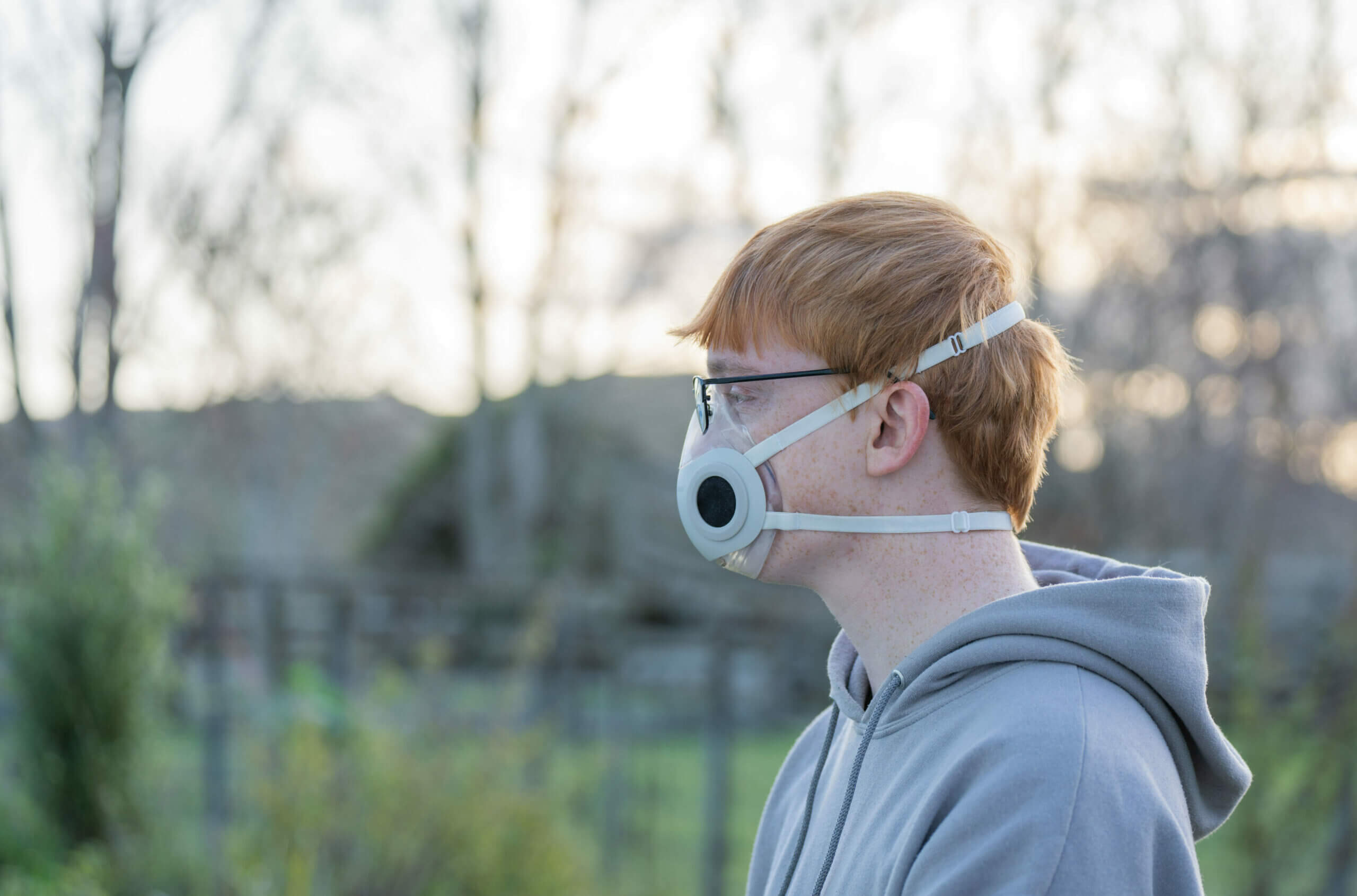
ActiveMask is a respirator that fits in a unique niche – a niche in which it stands almost alone. ActiveMask provides a lightweight and significantly more comfortable approach where half-face respirators are usually unwieldy and uncomfortable. Further, this is one of the few reusable P2 devices that doesn’t use cartridges.
While this mask will perform anywhere, the P2 certification makes it ideal for users looking for a high level of filtration in Australia and New Zealand. As of writing this article, this respirator has become my recommendation for anyone in either of these two countries.
Even for international users, ActiveMask is a performant device that provides a high level of protection on par with N95 and FFP2 devices. In addition, due to the silicone and plastic design of the mask, many users will also experience a better fit with this device than the best disposable respirators.
The inclusion of an easily attachable face shield makes ActiveMask a compelling mask choice for anyone in an industry that regularly interacts with people. Although the face shield is quite small, it provides an added level of protection that most respirators don’t.
Although ActiveMask has a lot of positive aspects, there are some downsides too. The biggest downside I noted during my time with the mask was the comfort over more extended periods of wear. While the respirator was far more comfortable than most half-face respirators that it competes with, I did find myself needing to remove the mask every few hours temporarily.
I also believe that making some minor changes to the nose seal of the respirator would be beneficial. While I’m not entirely sure what would remedy this issue, I encountered leakage around my nose until I found the ‘secret’ to donning the mask. While this method solved my leakage issues, some people may not realise this. With that being said, this issue could be limited to my own use.
The look of the mask might also be off-putting for some individuals. While I think this is one of the best-looking silicone masks I have encountered, the look can still be polarizing for some people. While this will be a non-issue in occupational settings, it can cause consumers to have second thoughts.
I will continue to use my ActiveMask. The extra protection provided by the plastic design in terms of fit and filtration offsets the minor fashion inconveniences. This is especially true when compared to the larger and arguably worse-looking masks such as Gill Mask, AirHead Mask and ModPPE S2.
Overall, whether you are an occupational user or consumer, ActiveMask is a respirator worth considering. However, if you’re interested in learning more about the best reusable masks, please consider reading my article.
Purchase ActiveMask & Learn More
ActiveMask FAQ
Does ActiveMask Have a Certification?
Yes. ActiveMask is certified P2 as per AS/NZS1716.
Is ActiveMask Lab Tested?
Yes. ActiveMask has been lab-tested and achieved the P2 certification.
Where Can I Buy ActiveMask?
You can purchase ActiveMask from its website.
What Are Some Alternatives to ActiveMask?
Does ActiveMask Use an Exhalation Valve?
Yes. However, this valve can be covered with an included carbon filter.
What Does ActiveMask Filter?
ActiveMask is certified P2 and filters > 94% of particles. This includes particles such as expelled respiratory particles, fine dust, and even oil aerosols.
Does ActiveMask Have a Carbon Filter?
Yes. ActiveMask has activated carbon included in all filters.
Have Questions or Comments?
Join the discussion on the BreatheSafeAir Community Forum. Ask any questions you have about air quality or adjacent topics and get quick answers!